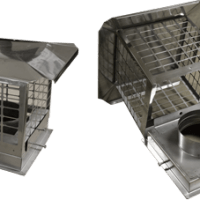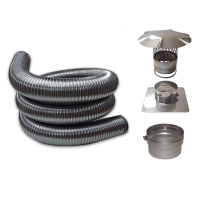Woodstoves and inserts are more efficient than open fireplaces and, if properly installed, can be quite adequate. However many difficulties have been experienced, especially with poor connections between fireplace inserts and original chimney flues.
Liability (in the context of this article) is the state of being legally responsible to compensate someone for property damage or injury. Almost anyone involved in a real estate transaction could be open to potential liability. Here is an example which illustrates the issue of liability…
A home is sold with a wood burning space heater. If a house fire occurs because of an inadequate installation, who is to blame? The vendor? The Realtor? What about the home inspector? What if the home inspector was able to inspect only part of the total system? What if the type of system required more tools for dismantling and testing, and considerably more time than available?
The key issue here is what the purchaser thinks he or she is getting from the parties involved.
Protect yourself, and avoid potential liability – the easy way.
A complete inspection of any wood burning appliance involves an evaluation of every part of the heating system, from the floor pad to the chimney cap. All of these parts are covered in the codes, so compliance can only be determined if every part is inspected.
The chimney is usually the most difficult part of the system to inspect properly. Chimneys which run up through the house are often inaccessible at critical points, such as ceiling and attic penetrations. In some cases, even though you can see sections of the chimney, they cannot be reached with a tape measure to confirm their clearance to combustible building materials. Flue liners are subject to cracking inside masonry chimneys, or buckling and corrosion in the case of metal chimneys. It is difficult to inspect a chimney liner unless it has just been cleaned.
Why not have a certified wood heating technician perform a thorough cleaning and inspection, before the house is listed for sale?
Most state and provincial fire codes, as well as most household insurers, require homeowners to maintain the safety of their chimneys and inspect them at least once a year. Consulting a certified chimney sweep will ensure the present and future owners’ safety, and help relieve the liability issues for all parties involved.
A certified technician or chimney sweep will prepare a detailed, written report and have the homeowner sign it. He or she will make sure the homeowner understands the report, especially those areas where problems are found.
A Simple Solution:
Aside from the safety and liability issues, if a wood burning installation is disassembled, thoroughly cleaned and inspected prior to the house being listed, all parties will be aware of the physical condition of the system before an offer to purchase is presented.
There will be no surprises after the fact. Deals will not fall through because of defects discovered, or concerns raised as a result of a subsequent home inspection.
Inspection by a certified professional prior to listing can streamline and simplify the process of purchase and sale.
Gil Strachan is a professional home inspector, representing Electrospec Home Inspection Services in east-central Ontario, Canada since 1994. For more information about home inspections, visit http://www.allaroundthehouse.com.





